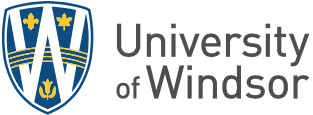Kathryn Pfaff, RN, MSc, PhD student
Faculty of Nursing, University of Windsor
Windsor, ON
Susan Dennison, RN, BScN, MSc student
Faculty of Nursing, University of Windsor
Windsor, ON
Michelle Freeman, RN, MSc, PhD student
Faculty of Nursing, University of Windsor
Windsor, ON
Patricia McKay RN, MScN
Faculty of Nursing, University of Windsor
Windsor, ON
Purpose of Study: The overall purpose of this study was to explore the medication safety practices and experiences of undergraduate nursing students and clinical faculty. Specifically, the goal was to better understand medication administration practices, student nurse preparedness and competency in medication administration, instructor supervision, medication errors and near misses.
Rationale and Significance: The patient safety movement has increased awareness of the hazards in our current health care system. Medication administration is identified as one of the greatest hazards to patients. International studies have revealed that medication incidents form the largest category of adverse events. Canadian researchers found that adverse events occurred in 7.5% of medical/surgical admissions, in non-specialized acute care hospitals. Although most patients recovered, approximately 21 percent, or up to 23,750 people died as a result of error.
The Faculty of Nursing at the University of Windsor supports a learning culture and a culture of safety, where errors are examined, not to blame the individual, but to learn how to prevent them from reoccurring. Understanding the “how” and “why” surrounding how medication errors occur, may offer evidence to inform the medication administration policies and curricula in baccalaureate nursing programs.
Methods: A cross-sectional survey was conducted among third and fourth year baccalaureate nursing students and clinical faculty of the Collaborative Baccalaureate Nursing Program at the University of Windsor. The survey was designed to capture the factors related to medication errors and near misses, as well as student and faculty perspectives toward the teaching and learning of medication administration.
Results: Data collection is currently underway.
Implications: Once analysis is complete, the results will be used to offer implications for medication administration policies and curricula in baccalaureate nursing programs. Understanding and improving the teaching and learning of the medication administration process may lead to enhanced patient safety through reductions in error.
